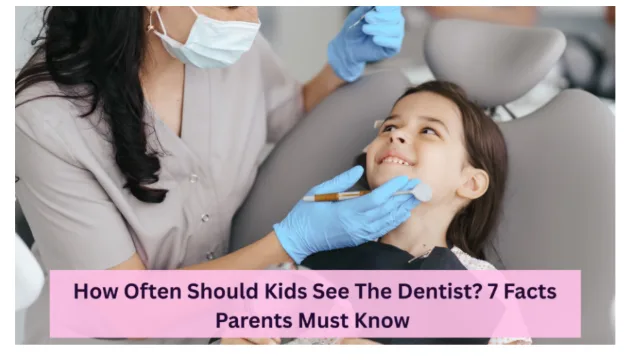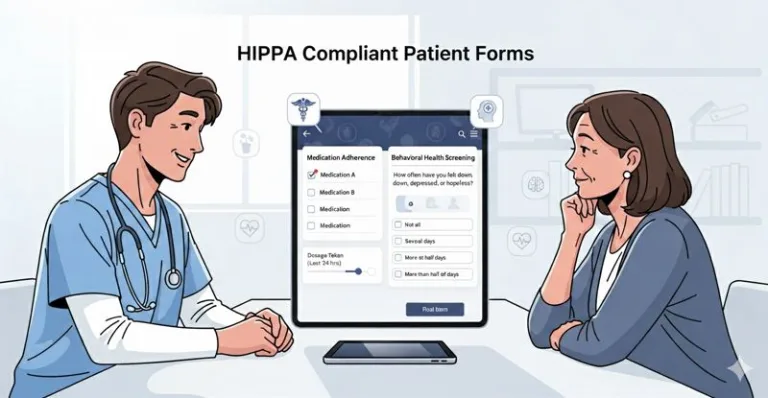How Often Should Kids See The Dentist? 7 Facts Parents Must Know
Visiting the dentist with your kid may seem like a trip on the long list of tasks in the busy schedule, but it should be given a high priority. Healthy teeth not only give you a bright smile but also assist in the process of eating, speaking, and self-confidence.
As a parent, you would want to be assured that your child visits a dental practitioner at the appropriate time to avoid issues before they arise. Dental practices usually offer a full range of services.
These include routine checkups, restorative treatments, cosmetic procedures, and even emergency care. Because of this, they are well-equipped to meet the dental needs of children from infancy through adolescence.
In this article, you will learn about the frequency of visits to the dentist by kids and seven essential facts that every parent should know to make the appropriate choice regarding the dental care of their child.
- Begin Early to Establish a Routine
The initial visit to the dentist needs to be early enough- preferably at the emergence of the first tooth or at the first birthday. Early checkups will help establish the habit of oral treatment throughout life.
It is always a good idea to have a local dentist who will be convenient, follow up, and can be easily approached in an emergency or any dental problem. A visit to the local area also helps your child gain trust and continuity with the same dental treatment in the long run.
For instance, if you reside in Bensalem, visiting a dentist in Bensalem would allow them to keep track of the progress of your child and their teeth, provide individual advice on oral care, and make your child feel relaxed and assured each time they visit the office.
- Visit Every Six Months as a General Rule
For many children, it is recommended to have twice-yearly visits. This plan enables the dentist to check on the dental progress, clear plaque that may be missed by brushing, and use preventive therapy (e.g., sealants or fluoride).
As the dental clinic focuses on family care, families may find it easier to coordinate checkups for both adults and children.
- More Frequent Visits for High-Risk Kids
There are children who might require more frequent examination, say every three to four months, in case the child is more susceptible to cavities, or has enamel weaknesses, faces nutritional deficiencies, or uses orthodontic devices.
Regular check-ups allow the dental staff to intervene at the initial stage and avoid more severe complications. With a dental practice that offers full family preventive care, it becomes easy to modify the visit schedules and the treatment plan to suit the needs of every child.
- Regular Visits Help Track Growth and Prevent Future Issues
The dental examination session typically involves teeth cleaning and possible preventive care. The dentist will look into the growth of teeth, gums, bite, and jaw. The hygienist polishes and cleanses the surfaces.
Decay prevention may be done by applying fluoride or sealants. In order to examine the areas that are not visible in a routine examination, small dental X-rays might be performed when necessary. Home care and diet are also issues addressed by the dentist.
Subsequent visits also assist the dentist in quickening the identification of early signs of crowding, misalignment or other changes that might require attention in the future as the children grow.
- Adjust Frequency as the Child Grows
The needs of children change as they develop. Primary teeth are replaced with secondary teeth, and the problem of biting or incorrect alignment can occur.
At the mixed dentition stage (ages 6-12 years old), the dentist may suggest more frequent checks to ensure the teeth have erupted correctly. In later teenage stages, they can also visit the dentist for orthodontic procedures or cosmetic treatments (such as teeth whitening or aligners).
The availability of all these services under one roof ensures that continuous care is easy and consistent.
Recognize Signs That Prompt Immediate Visits
Do not wait till the next scheduled check-up in case your child shows signs of trouble. Toothache, swollen gums, bleeding of the gum, tooth sensitivity or trauma (e.g., a knocked-out tooth) are warning signs that need to be addressed as early as possible. Prompt intervention usually decreases the threat of subsequent, more invasive intervention.
Parental Role Makes a Big Difference
Your parental role is of primary importance. Despite frequent visits by your child, proper brushing (three times a day), flossing, reducing snacks with high sugar content, and a proper, balanced diet are necessary.
The dentist will educate patients on such subjects during visits and may prescribe fluoride of a specific strength or recommend special equipment. In addition, maintaining the schedule of appointments every time assists in reinforcing positive behavior.
A family dentistry practice typically motivates parents to lead by example, making it an enjoyable experience for children to visit the clinic.
Conclusion
Children should visit the dentist at a young age, usually every six months; however, this schedule may vary depending on individual risk factors, development, and emerging issues. As in many dental practices nowadays, general, cosmetic, restorative, orthodontic, and emergency services are all available under the same roof.
This allows for a smooth review of the dental care offered to your child as they grow. It is essential to remember that frequent visits are not only a task but also provide an opportunity to prevent illness at an early stage, initiate treatment, and educate.
With regular visits and looking out for warning signs, you will provide your child with the opportunity to have a healthy, confident, caring smile throughout their life.





